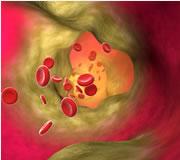
“Currently there is no effective treatment for neonatal arterial ischemic stroke (AIS).
Cannabidiol (CBD) is neuroprotective in models of newborn hypoxic-ischemic brain damage and adult stroke.
The purpose of this work was to study the protective effect of CBD in a neonatal rat model of AIS.
RESULTS:
CBD administration improved neurobehavioral function regarding strength, hemiparesis, coordination and sensorimotor performance as assessed at P15 and P38. MRI indicated that CBD did not reduce the volume of infarct but reduced the volume of perilesional gliosis. H+-MRS indicated that CBD reduced metabolic derangement and excitotoxicty, and protected astrocyte function. Histologic studies indicated that CBD reduced neuronal loss and apoptosis, and modulated astrogliosis and microglial proliferation and activation.
CONCLUSIONS:
CBD administration after Middle Cerebral Artery Occlusion (MCAO) led to long-term functional recovery, reducing neuronal loss and astrogliosis, and modulating apoptosis, metabolic derangement, excitotoxicity and neuro-inflammation.”
https://www.ncbi.nlm.nih.gov/pubmed/28012949
“Post-stroke administration of Cannabidiol (CBD) is neuroprotective in neonatal rats. CBD neuroprotection is sustained in the long term. CBD treatment led to functional recovery in both motor and sensorimotor domains. CBD modulated excitotoxicity, astrocyte dysfunction and microglial activation.”
https://www.sciencedirect.com/science/article/pii/S0028390816305810
 “The cannabinoid receptor-2 (CB2R) was initially thought to be the “peripheral cannabinoid receptor.” Recent studies, however, have documented CB2R expression in the brain in both glial and neuronal cells, and increasing evidence suggests an important role for CB2R in the central nervous system inflammatory response.
Intracerebral hemorrhage (ICH), which occurs when a diseased cerebral vessel ruptures, accounts for 10-15% of all strokes. Although surgical techniques have significantly advanced in the past two decades, ICH continues to have a high mortality rate.
The aim of this study was to investigate the therapeutic effects of CB2R stimulation in acute phase after experimental ICH in rats and its related mechanisms.
These findings demonstrated that CB2R stimulation significantly protected the brain damage and suppressed neuroinflammation by promoting the acquisition of microglial M2 phenotype in acute stage after ICH.
Taken together, this study provided mechanism insight into neuroprotective effects by CB2R stimulation after ICH.”
“The cannabinoid receptor-2 (CB2R) was initially thought to be the “peripheral cannabinoid receptor.” Recent studies, however, have documented CB2R expression in the brain in both glial and neuronal cells, and increasing evidence suggests an important role for CB2R in the central nervous system inflammatory response.
Intracerebral hemorrhage (ICH), which occurs when a diseased cerebral vessel ruptures, accounts for 10-15% of all strokes. Although surgical techniques have significantly advanced in the past two decades, ICH continues to have a high mortality rate.
The aim of this study was to investigate the therapeutic effects of CB2R stimulation in acute phase after experimental ICH in rats and its related mechanisms.
These findings demonstrated that CB2R stimulation significantly protected the brain damage and suppressed neuroinflammation by promoting the acquisition of microglial M2 phenotype in acute stage after ICH.
Taken together, this study provided mechanism insight into neuroprotective effects by CB2R stimulation after ICH.”





